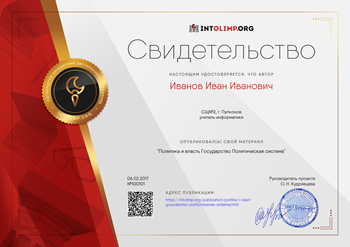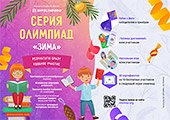LESSON PLAN
| Lesson: The strange world of Australian animals
| School: | ||
| Date: | Teacher name: Saltanat Ualieva | ||
| Class: 8 | Number present: | Absent: | |
| Learning objectives that this lesson is contributing to | 8.S2 ask more complex questions to get information about a range of general topics and some curricular topics 8.L2 understand with little or no support most specific information in extended talk on a wide range of general and curricular topics 8.R2 understand specific information and detail in texts on a growing range of familiar general and curricular topics, including some extended texts | ||
| Lessons objectives | All learners will be able to:
Most learners will be able to:
Some learners will be able to:
| ||
| Language objectives | Learners can: know and use the terms that are connected with “The strange world of Australian animals” develop spoken language, they will be able to speak on the theme “The strange world of Australian animals”. Get more information about Australia’s animals and birds, they will be able to work individually and in groups. | ||
| Key words and phrases: Captain Cook, the kangaroo, the koala, the dingo, the kookaburra | |||
| Useful classroom language for dialogue/writing: Discussion points: What do you know about Australia’s animals? Can you say why …? Why is Australia called the upside down world? | |||
| Previous learning | In groups while discussing the Australian animals | ||
| Plan | ||||||
| Planned timings | Planned activities (replace the notes below with your planned activities) | Resources |
| |||
| 3 minutes
5 minutes
5 minutes
12 minutes
10 minutes 5 minutes
5 minute | 1. Introduction Greeting 2. Speaking 1. What the weather like today in Australia? 2. What do you know about Australia? It is the world’s largest island and its smallest continent.
The first people in Australia were the Aborigines, who came more than 40,000 years ago.
Australia has been called “the land of differences” and “the continent of contrasts”. There are many ways in which it is different from other countries. The first thing most people think of are the strange native animals There are many wild animals in Australia. Some of them, such as ……… Video T-3 Group work Divide class into 3 groups(name your group according the Australian animals) Every group present its names and captains Instructions- There are 3 stations/ every station has its task
Reading station 1. Sometimes Australia is called “upside down world”. Because Australia lies in the Southern Hemisphere, where winter comes in July and summer begins in December. During the Christmas holidays people often sunbathe on the beach or swim and surf in the ocean. It is interesting to notice that though most of the territory is too dry or too hot. Australia has an extraordinary collection of birds and animals. Many of them are found only there. Early explores were so surprised by the emu and the kangaroo that they described the continent as the land where birds ran instead of flying and animals hopped instead of running. Australia is the home of kangaroos. There are more than 40 different kinds of kangaroos in Australia, in many different colours and sizes. The big red kangaroo and the grey kangaroo may be as tall as a grown –up man. Some kangaroos are about the size of a large dog. The smallest kangaroo is the rat kangaroo. Another well -known Australia’s animal is the koala that resembles a teddy- bear. It spends most of its life eucalyptus trees and eats only the leaves of these trees. Among other animals found in Australia is the dingo, a wild dog which is yellowish brown and has a bushy tail. The emu , Australia’s largest bird is also one of the largest in the world. It cannot fly but is a good runner. Another curious bird is the kookaburra that is often called the “laughing jackass ”. Other Australian birds are lyrebirds, brilliantly coloured parrots and the great white cockatoo. Two animals were brought to the country by the Europeans and have become wild in Australia. These are the buffalo, brought from India and the European rabbit.
Task Remember the text and complete the sentences 1. Sometimes Australia is called…….. 2. In Australia winter comes in ……. and summer begins in ……. . 3. During the Christmas holidays people ……………. . 4. Australia has extraordinary collection of ……….. . 5. Early explorers described Australia as the land where bird ….. and animals ….. Between station students do energizer- Task 5: Work in pairs Example: the upside down world / why ….. ? Why is Australia called the upside down world? It is called the upside down world because it is situated in the Southern Hemisphere./ the hottest season in winter. 1. found only in Australia/ What animals…….? What animals are found only in Australia? 2. kinds of kangaroos/ How many …….? How many kinds of kangaroos are there in Australia? There are more than 40 different kinds of kangaroos in Australia. 3. a teddy bear / What animal….? What animal resembles a teddy bear? A well -known Australia’s animal is the koala that resembles a teddy bear. 4. brought from India / What is the name of the animal…….? These are the buffalo, brought from India and the European rabbit. 5. the largest bird/ what is…..? What is the largest bird in Australia? The emu ……
Task 6: Who is quicker?
1. There are different kinds of …………. /kangaroos-big and small./ 3.The smallest kangaroo is the ……… /rat kangaroo/. 4.The koala looks like a nice ……. /soft teddy-bear/. 5.The name of Australia’s wild dog is ……. /“dingo”/. 6. The buffalo was brought to Australia ……. /from India/. 7.The emu can fly, but it isn’t a….. / good runner/. 8.The kookaburra is often called the ……. /“smiling jackass”/.
Summary H/t: Write an Essay “Australian animals”
| Power point presentation/ slides Slides/ pictures Text Cards slides/cards | Coloborative environment
context
Flipped classroom technique Engaging Understand specific information | |||
| Additional information | ||||||
| Differentiation – how do you plan to give more support? How do you plan to challenge the more able learners? | Assessment – how are you planning to check learners’ learning? | Cross-curricular links Health and safety check ICT links Values links | ||||
| - Create mixed ability groups for discussion. Ensure they are not always in the role of timekeeper.
- At start of lesson, they think of several reasons why pictures/slides could be the odd one out. - They share further facts about Australia. | - Monitor learners to check they can pick up specific details when listening facts about Australia. Note those who found listening for detail hard. - Observe learners when participating in discussion. Did the group dynamics work? Did each learner contribute to the discussion? If not, why not? (e.g. didn’t understand what to do; not so confident speaking English; not interested in topic; other)
| Geography: - developing vocabulary range to communicate knowledge of Australia; looking at a map of the world showing recent natural disasters and interpreting information on it. - to know the geographical location of the country. | ||||
| Reflection Were the lesson objectives/learning objectives realistic? What did the learners learn today? What was the learning atmosphere like? Did my planned differentiation work well? Did I stick to timings? What changes did I make from my plan and why?
|
| |||||
|
| ||||||







